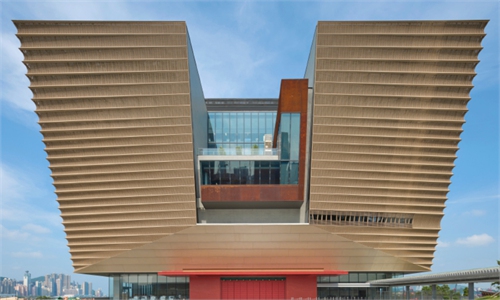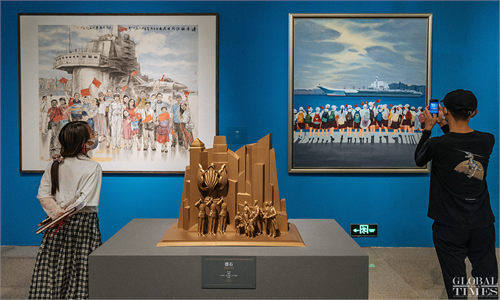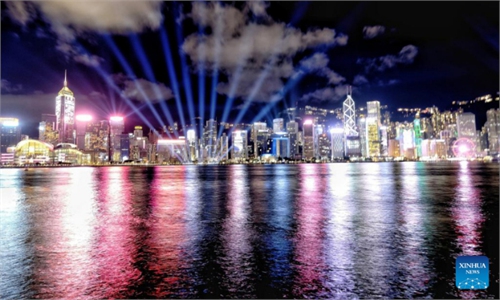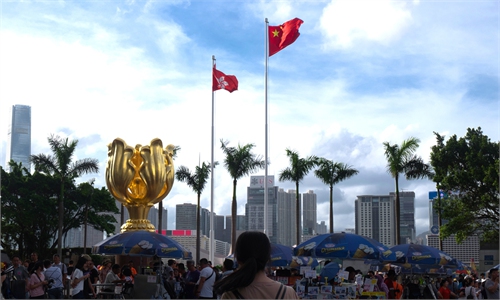ARTS / CULTURE & LEISURE
Three palace museums, one family, says Hong Kong Palace Museum curator, eyeing on future cooperation
United as one
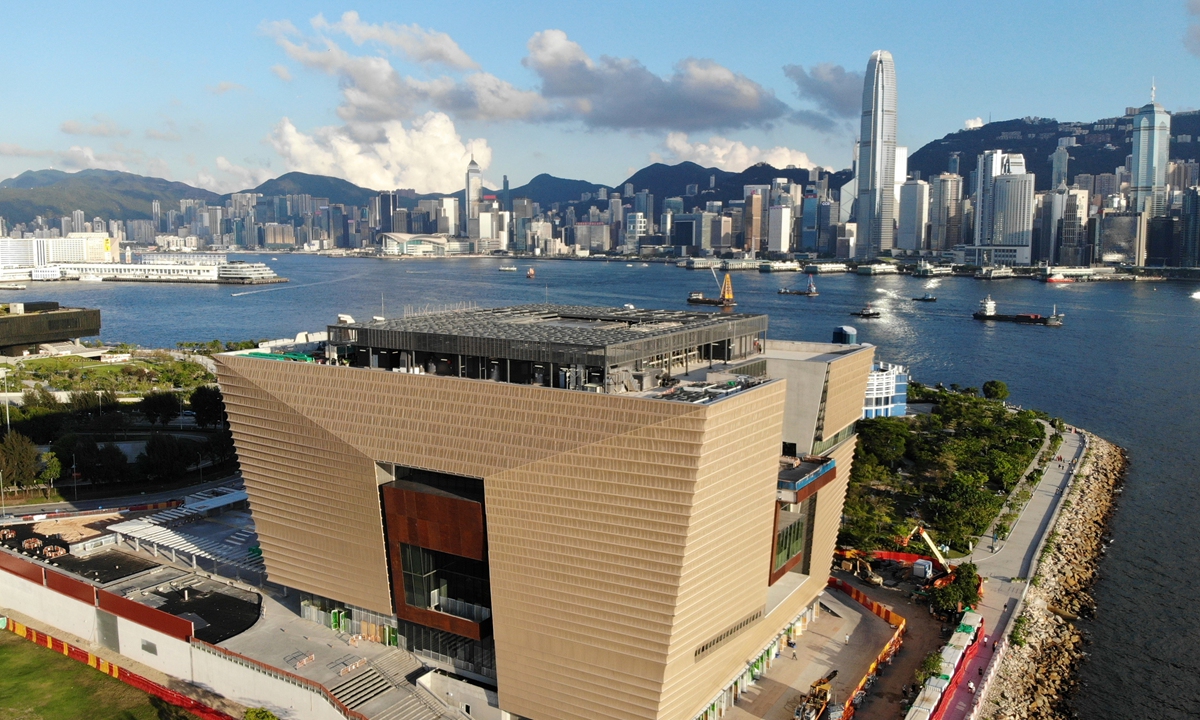
The Hong Kong Palace Museum Photo: IC
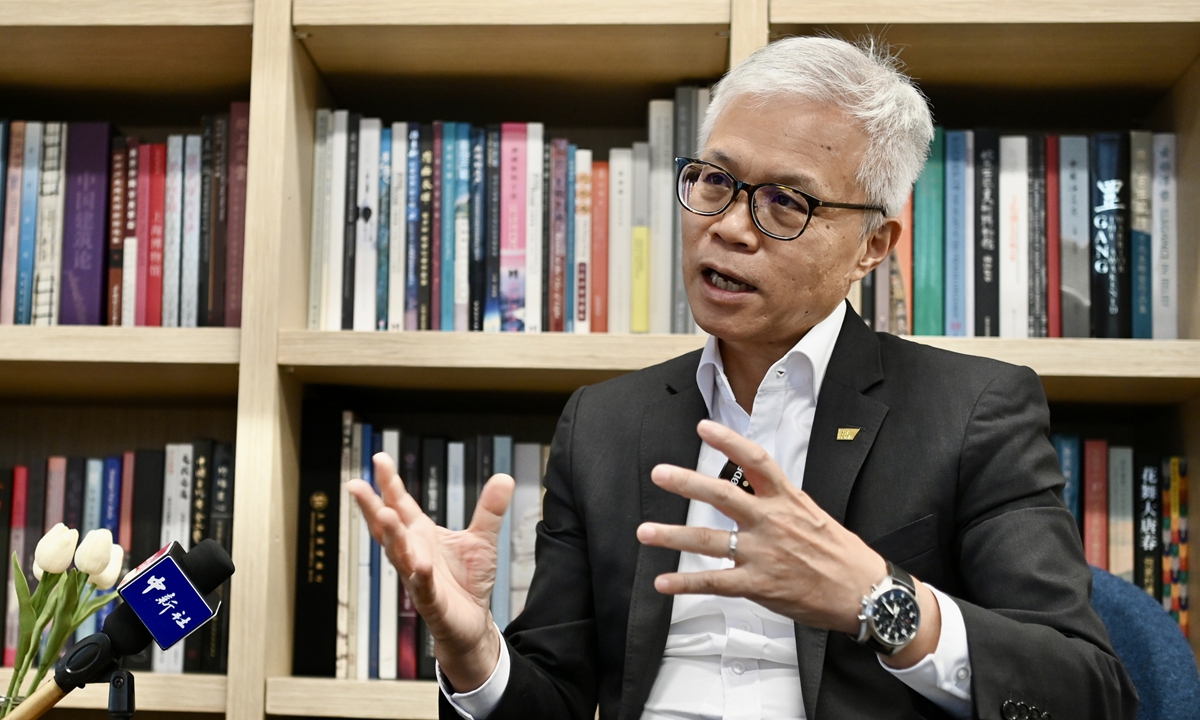
Louis Ng, curator of the Hong Kong Palace Museum Photo: IC
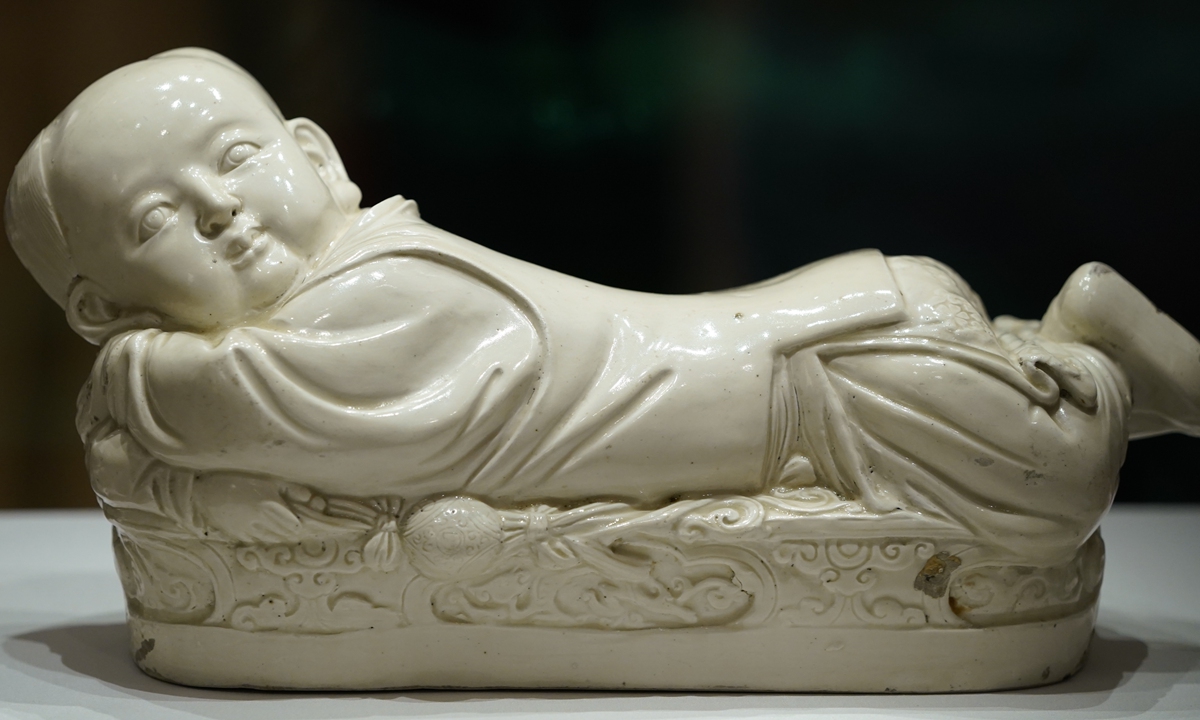
Ding Ware porcelain relic Pillow in the Shape of a Recumbent Child Photo: IC
"There has long been a close connection between the palace museums in Beijing and Taipei. Now Hong Kong has joined to add another palace museum in the country, where there will be more communication among the three in the future," said Louis Ng, curator of the new Hong Kong Palace Museum (HKPM).After five years of working with the Palace Museum in Beijing and despite so-called critics in the media and controversies surrounding the multibillion-dollar project, the HKPM is set to open to the public on Saturday, a day after the 25th anniversary of Hong Kong's return to the motherland.
The Global Times recently reached the curator through a virtual meeting, where the experienced historian shared his views in the office toward the high-profile landmark overlooking the stunning city view.
Ng explained to the Global Times that the current mission of the soon-to-be opened museum is to provide educational activities for students at local schools. Meanwhile, more communication with museums both domestic and abroad is also anticipated - "Cooperation with the National Palace Museum in Taipei is indispensable."
The HKPM has received generous and diverse support from the Beijing Palace Museum, with which it signed a cooperative agreement in 2017. A total of 914 artworks and relics set to go on display at the museum are on loan from the Beijing Palace Museum. Among them, 166 are first-class cultural relics recognized as national treasures. This is the largest loan by the Beijing Palace Museum to another institution since its establishment in 1925.
Part of Chinese culture
The museum is located in the bustling West Kowloon Cultural District, one of the city's largest cultural programs as well as an area that has a rich history, as seen in the well-preserved centuries-old buildings on streets.
Born and raised in West Kowloon, Ng has been protecting the landmarks in the area, including the Hong Kong History Museum and St Andrew's Church, for decades. Over the years, he has established a deep connection to these ancient buildings. Now his duty encompasses the new palace museum, an innovative complex that incorporates new construction concepts and digitalization.
Just like the city itself, the museum reflects Hong Kong's position as a highly integrated port city: to spread both modern and traditional Chinese culture by taking advantage of the city's urban culture and geographical advantages. Similarly, the new museum is a perfect mix of the traditional culture on display at the Palace Museum in Beijing and Hong Kong's own unique elements, through which it will introduce to the world the diversity of Chinese culture.
"Talking about the culture of either city or this museum in Hong Kong, everything relies on the motherland. Chinese traditional culture is the foundation and all the cultural elements and the local heritage in Hong Kong that we see now are based on that. The city was only later impacted by foreign cultures," Ng explained.
However it would only count as a branch of the Beijing Palace Museum if we only put the relics on display without any added innovation, which is not what we want from our museum. We want the museum to involve Hong Kong's own characteristics to showcase our part in Chinese culture, he added.
In the future, by cooperating with local artists and designers, the HKPM will establish a close bond with the local community, devoting itself to artistically make the museum's activities a part of people's everyday lives.
Other than that, the museum will also include broader exhibitions on human civilization by working with museums abroad such as those in Iran, Pakistan and India.
Innovative exhibitions
On Thursday, the HKPM held its official opening ceremony, during which a number of high profile figures were seen in attendance such as Chief Executive of the Hong Kong Special Administrative Region (HKSAR) Carrie Lam and curator of the Palace Museum in Beijing Wang Xudong, who "showed great interest in new exhibition techniques that are different from Beijing's," noted Ng.
According to a museum press release, world-renowned artworks such as the painting Nymph of the Luo River by artist Gu Kaizhi of the Jin Dynasty (265-420) and Autumn Colors among Rivers and Mountains by Zhao Boju of the Song Dynasty (960-1279) will be displayed alongside hundreds of relics across nine exhibition halls.
In order to introduce these treasures to visitors from different cultural backgrounds, the nine halls are equipped with more than 50 multimedia displays revealing interesting stories related to them.
"Many people may not know it, but Hong Kong has a deep connection with the Palace Museum," recalled Ng.
In 1950, some cultural relics, which were smuggled out from the Forbidden City during the Qing Dynasty (1644-1911), reappeared in the Hong Kong auction market. A number of Hong Kong collectors purchased these items and returned them to the Palace Museum in Beijing.
"In the opening exhibition, we will also present the stories of these collectors and donors. Despite the UK's long sovereignty over Hong Kong, many Hongkongers still contributed greatly to the motherland and served it," said Ng.
